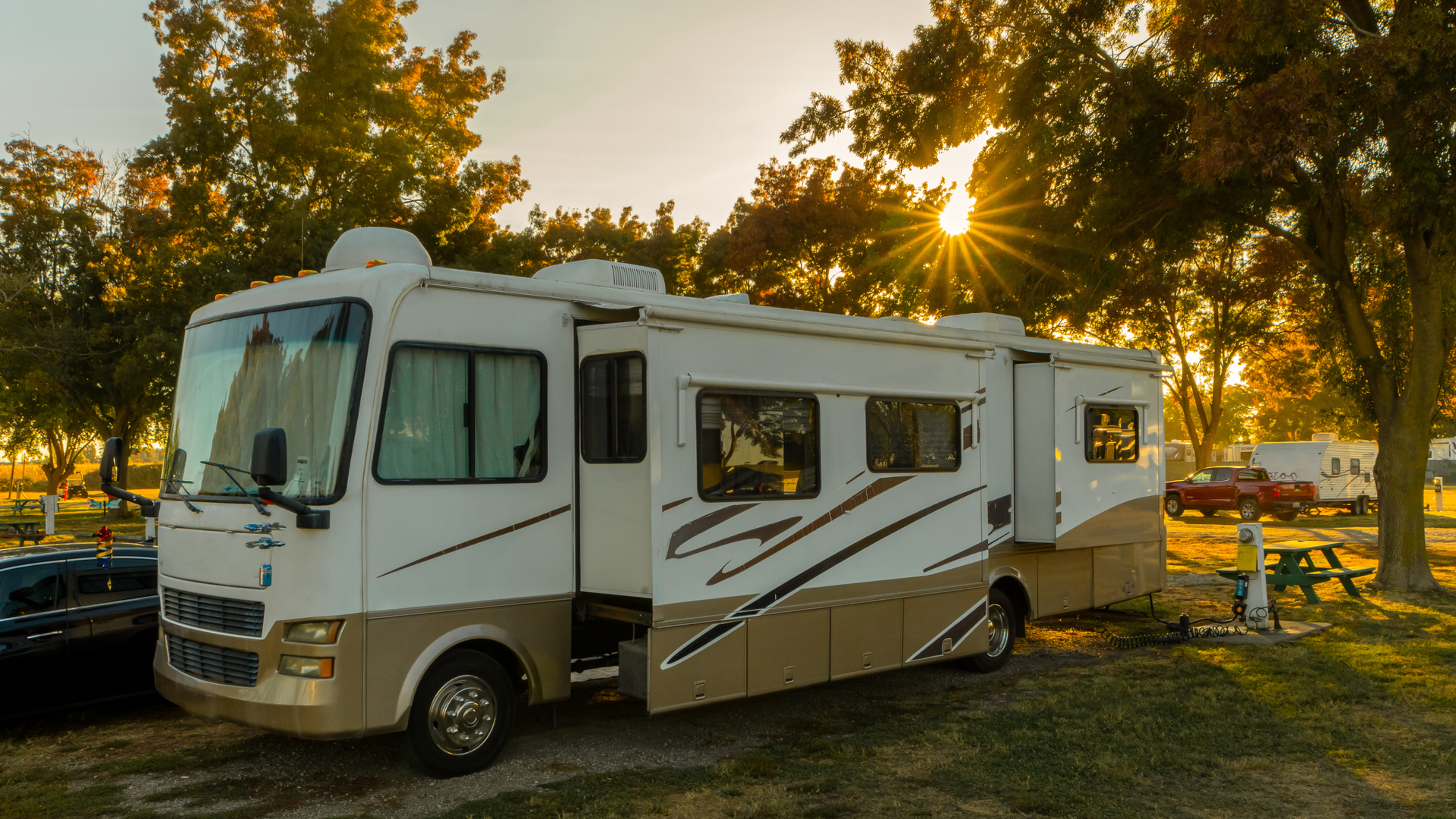Crew Housing & OSHA: What You Should Know
Disclaimer: Hard Hat Housing does not offer legal, financial, or tax advice. This article is for informational purposes only. Consult your counsel or qualified advisors about how the laws and regulations apply to your specific projects.
Good crew housing is not only about comfort and cost. In the U.S. construction market, living conditions can influence safety outcomes, incident rates, and whether your operation stays compliant with OSHA and related requirements. This guide explains when OSHA standards apply to employer-arranged housing, what those rules actually require, how living conditions show up on the job in the form of fatigue and incidents, and practical steps to keep your construction accommodation program safe, defensible, and worker‑friendly.
When OSHA applies to housing for construction crews
OSHA’s Temporary Labor Camps standard,
29 CFR §1910.142, applies to employer‑provided housing when that housing is a term or condition of employment. OSHA’s Field Operations Manual makes this explicit for non‑agriculture sectors, listing
construction among common examples. It also clarifies what “temporary” means (time‑limited employment, not necessarily a tent or trailer) and outlines shared authority with the Department of Labor’s Wage and Hour Division for enforcement and interpretations. In short, if your company requires or practically compels workers to live in employer-arranged housing, OSHA can evaluate the housing itself as a work environment.
OSHA has long said the standard is enforceable even if the employer does not own the facility, such as when workers are placed in motels as a condition of employment. If hazards exist and the lodging is clearly employment‑related, the agency can cite violations. That principle sits alongside OSHA’s construction sanitation rule,
29 CFR §1926.51, which covers jobsite restrooms, washing and eating areas, and includes a short clause on “temporary sleeping quarters.” Together, these rules establish that what happens where your crews sleep can still be a safety and compliance issue once the housing is part of the job.
How living conditions affect safety and incident risk
Fatigue is a direct safety hazard. NIOSH notes that work‑related fatigue increases the risk of injuries and incidents and calls for employers and workers to manage fatigue risks together. Commutes amplify the problem: recent federal work shows continued attention to the link between long commutes and crash risk among safety‑critical workers. Outside of trucking, the same human limits apply to crew members who spend hours on the road getting to and from distant jobsites. In other words, poor or far‑away construction accommodation steals sleep and raises risk before the workday even begins.
Public data also highlight heat, recovery, and sleep quality as safety factors. CPWR’s August 2025 Data Bulletin found that construction accounts for over one‑third of heat‑related worker fatalities and ranks high in nonfatal heat injuries. Adequate nighttime cooling, rest, and hydration logistics begin where crews live, not just at the jobsite. If your teams are sleeping in crowded rooms with inconsistent HVAC or inadequate showers and laundry, you’re increasing next‑day heat stress and compounding hazard exposure on site.
Commuting and fatigue translate into roadway incidents too. AAA’s 2024 analysis reports that drowsy driving fatalities are far higher than official counts suggest, with lack of sleep causing impairment comparable to drunk driving. Drowsy workers in work trucks after 10‑ to 12‑hour shifts are not a theoretical risk. Housing that reduces commute time, supports consistent sleep, and offers quiet private spaces can be a practical control measure that makes your safety program work as intended.
Finally, consider air and fuel hazards that follow crews home. Heating and cooking in temporary units without proper installation or ventilation can lead to carbon monoxide exposure. NIOSH advises avoiding fuel‑burning engines indoors, and several states and codes now require carbon monoxide alarms in residential occupancies. If you control or arrange housing, verifying CO protection is a simple, high‑yield step in your safety plan.
What OSHA actually requires in employer‑provided housing
If §1910.142 applies, the housing must meet concrete, measurable basics. Highlights include: at least
50 sq ft of floor space per person in sleeping rooms;
100 sq ft per person in rooms used for cooking, living, and sleeping; beds spaced at least
36 inches apart and elevated
12 inches off the floor; windows totaling
one‑tenth of the floor area, with at least half openable; and effective screening on exterior openings. Service buildings must offer adequate hot and cold water, and showers must be provided at a ratio of
one per 10 occupants. These are not guidelines; they are enforceable standards.
Water and sanitation also have explicit thresholds. Camps must deliver about
35 gallons per person per day and place yard hydrants within
100 feet of shelters if water isn’t piped indoors. Toilet rooms must be within
200 feet of sleeping rooms; when bathrooms are shared, provide
one toilet per 15 people of each sex with a minimum of two fixtures per shared facility. On the jobsite, separate from the camp, §1926.51 requires at least
one toilet for 20 or fewer employees,
one seat and one urinal per 40 workers up to 200, and
one of each per 50 thereafter. If you provide temporary sleeping quarters at the jobsite, they must be
heated, ventilated, and lighted. Treat this as a checklist when approving any construction accommodation.
Enforcement trends and what to watch in 2025
Heat is a priority for OSHA. The agency’s proposed heat injury and illness prevention rule is progressing through rulemaking, with a multi‑week public hearing concluded on
July 2, 2025, and the post‑hearing comment period open through
October 30, 2025. At the same time, OSHA extended its
National Emphasis Program on heat inspections through
April 8, 2026. Even before any final rule, inspectors are focusing on heat, which makes overnight recovery conditions in crew housing a relevant compliance conversation.
OSHA also expanded its
instance‑by‑instance citation policy in April 2024, allowing more discretion to issue separate penalties for repeated or serious violations under specific standards or the General Duty Clause. For employers, that means poor documentation or repeated sanitation and housing‑related deficiencies can carry more bite. Stay on top of logs, headcounts, unit addresses, maintenance requests, and any safety tickets tied to crew lodging. If you reimburse or deduct housing costs from wages, align with Wage and Hour expectations to avoid conflicts with Davis‑Bacon or SCA obligations on federal work.
There is also a proposed rulemaking to clarify limits on General Duty Clause enforcement. While not final, it reflects ongoing debate about when OSHA should rely on the Clause versus specific standards. The safest approach is the simplest one: meet the clear requirements of §1910.142 and §1926.51 and document how your construction accommodation supports heat, hygiene, and rest.
Real‑world signals from the field
Public threads in construction forums show where policies on per diem, hotels, and roommates often break down. In the last year, managers in r/ConstructionManagers discussed typical hotel costs of
$120 to $300 per night and the expectation of private rooms for professionals, while others compared weekly per diem totals and rotations for wind and heavy civil assignments. HR pros also cautioned that forcing coworkers to share rooms may not be illegal everywhere but is a clear employee‑relations and risk exposure problem. These conversations echo what many safety teams already know: privacy and recovery are part of a safer job.
On Facebook, you can find weekly public posts from workers or their families looking for weekday rooms near projects and recruiters advertising per diem‑plus‑housing packages. That chatter is a reminder that crews are still scrambling for reliable places to live, and that project teams benefit when housing is solved centrally, consistently, and early.
Putting it all together: a practical approach to construction accommodation
Start with applicability. If you require crews to live in employer‑arranged housing, assume §1910.142 can apply. Use the OSHA checklist as your acceptance criteria: square footage per person, bed spacing, ventilation, window area, toilet and shower ratios, hot and cold water, drainage, refuse control, lighting, and first‑aid access. Add your own “above code” requirements that support rest, like private rooms, blackout shades, and quiet hours. Then coordinate with jobsite sanitation under §1926.51 so there’s no gap between where people work and where they sleep.
Next, design housing to lower fatigue and commute risk. Nighttime recovery and travel time show up as daytime incident risk. Consider proximity targets by drive time, not mileage; require functioning HVAC; and confirm adequate hot water and laundry throughput for the headcount. Build seatbelts into your plan for summer: cooling strategies, hydration storage, and meal prep capacity in kitchens matter when NEP heat inspections are active and a federal heat rule is looming.
Document relentlessly. Maintain unit addresses, nightly headcounts, move‑in and move‑out dates, maintenance tickets, and any safety complaints related to the housing. If you ever charge for housing, keep payroll and per diem records aligned with Wage and Hour requirements to avoid wage‑deduction issues during audits. This is the file your safety, HR, and project controls teams will be grateful to have.
How Hard Hat Housing can help you
We place crews in vetted, home‑like rentals close to the jobsite and tailored to construction schedules. Our units emphasize private rooms, full kitchens, laundry, parking, and documented monthly cleanings, and they often cost
25% to 35% less than hotel alternatives on longer assignments. We also help teams minimize “commute creep”, reducing fatigue and lost production time before the day starts. One invoice, predictable terms, and support that maps to your timeline—so your housing supports safety and compliance instead of undermining it.
A safer, more compliant housing plan is not complicated. Treat construction accommodation as part of your safety system, not a travel errand. Use OSHA’s black‑and‑white requirements as your floor, design for fatigue‑resistant recovery as your goal, and record everything in between. Do that, and you reduce risk, improve morale, and protect your schedule at the same time.
Need crew housing that supports real rest?
Tell us your dates, headcount, and site.
We will place your team near the job, with private rooms, full kitchens, and one predictable invoice.













